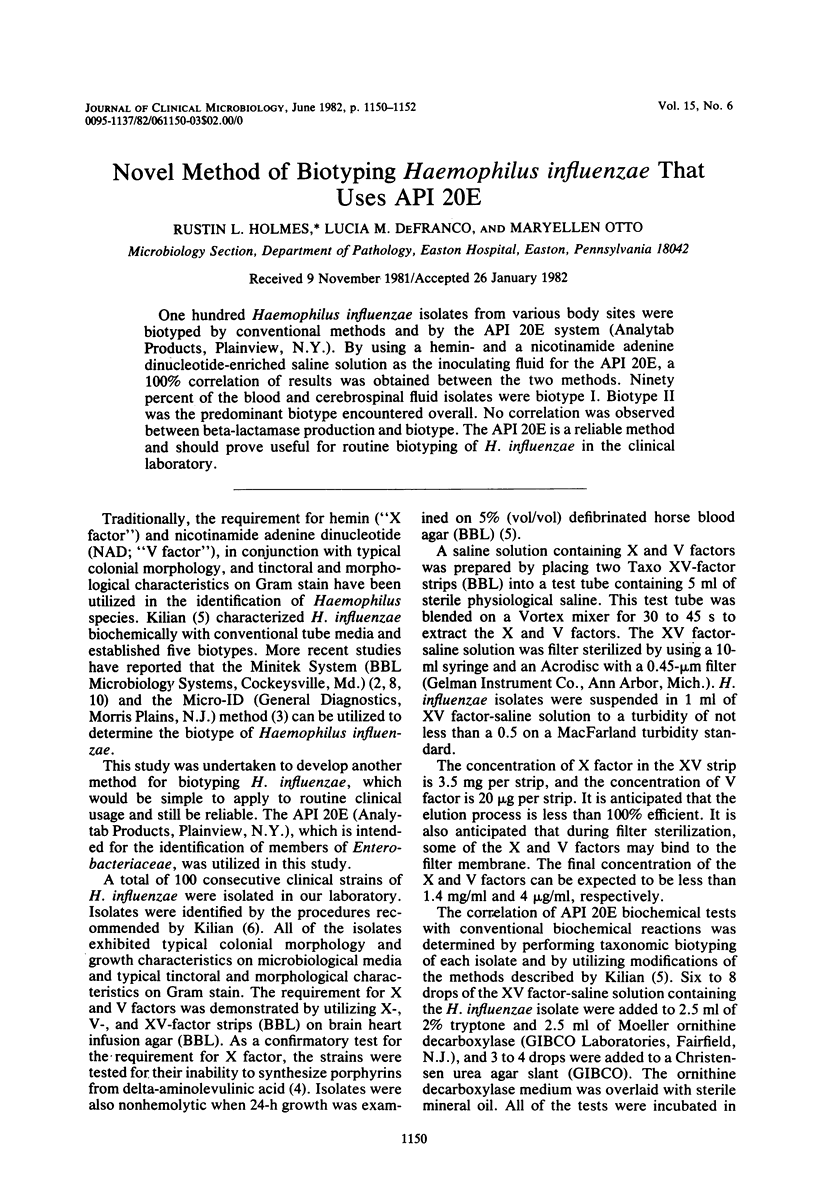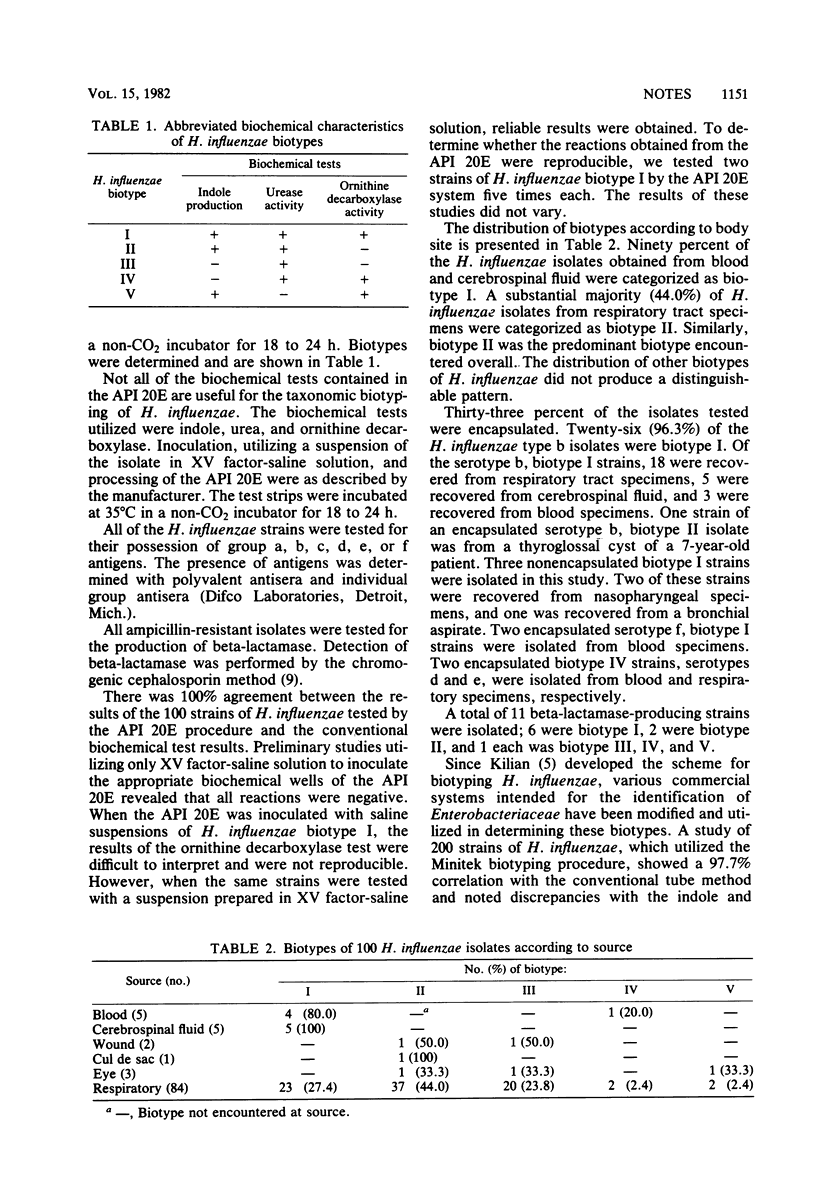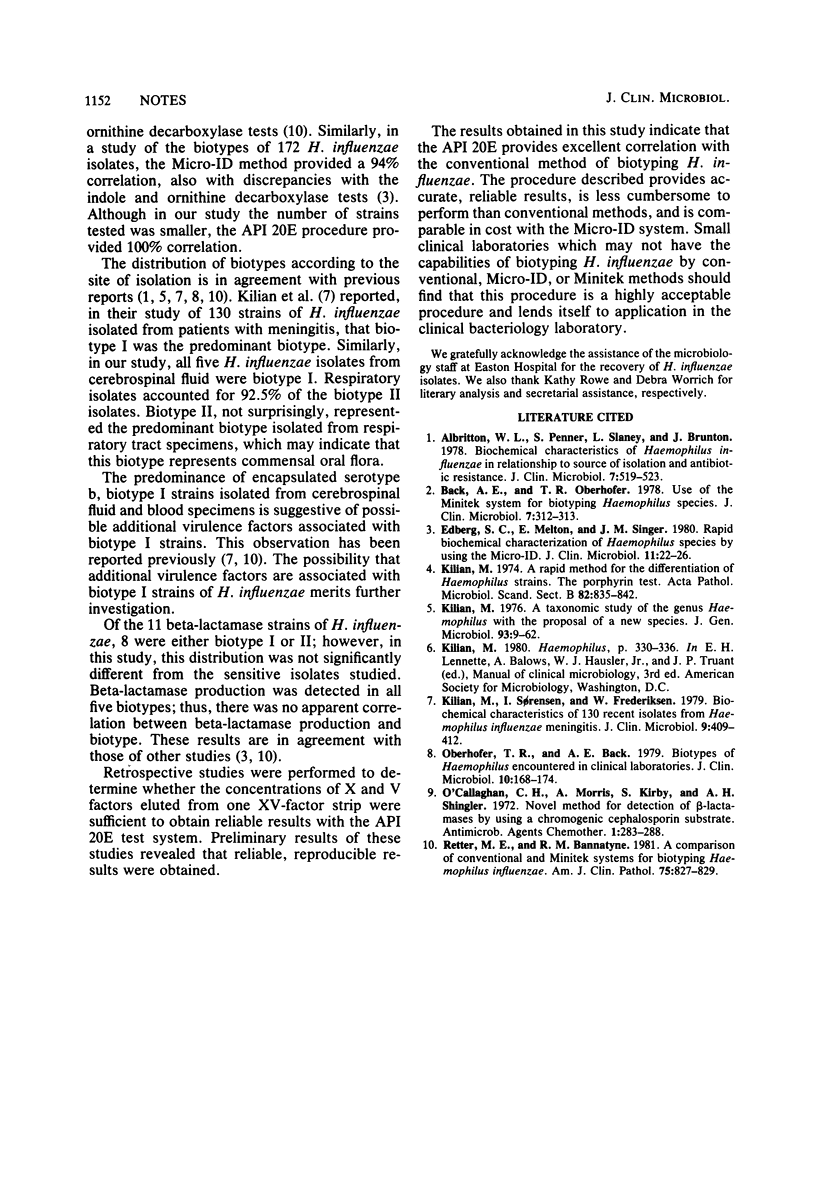Abstract
One hundred Haemophilus influenzae isolates from various body sites were biotyped by conventional methods and by the API 20E system (Analytab Products, Plainview, N.Y.). By using a hemin- and a nicotinamide adenine dinucleotide-enriched saline solution as the inoculating fluid for the API 20E, a 100% correlation of results was obtained between the two methods. Ninety percent of the blood and cerebrospinal fluid isolates were biotype I. Biotype II was the predominant biotype encountered overall. No correlation was observed between beta-lactamase production and biotype. The API 20E is a reliable method and should prove useful for routine biotyping of H. influenzae in the clinical laboratory.
Full text
PDF


Selected References
These references are in PubMed. This may not be the complete list of references from this article.
- Albritton W. L., Penner S., Slaney L., Brunton J. Biochemical characteristics of Haemophilus influenzae in relationship to source of isolation and antibiotic resistance. J Clin Microbiol. 1978 Jun;7(6):519–523. doi: 10.1128/jcm.7.6.519-523.1978. [DOI] [PMC free article] [PubMed] [Google Scholar]
- Back A. E., Oberhofer T. R. Use of the Minitek system for biotyping Haemophilus species. J Clin Microbiol. 1978 Mar;7(3):312–313. doi: 10.1128/jcm.7.3.312-313.1978. [DOI] [PMC free article] [PubMed] [Google Scholar]
- Edberg S. C., Melton E., Singer J. M. Rapid biochemical characterization of Haemophilus species by using the micro-ID. J Clin Microbiol. 1980 Jan;11(1):22–26. doi: 10.1128/jcm.11.1.22-26.1980. [DOI] [PMC free article] [PubMed] [Google Scholar]
- Kilian M. A rapid method for the differentiation of Haemophilus strains. The porphyrin test;. Acta Pathol Microbiol Scand B Microbiol Immunol. 1974 Dec;82(6):835–842. doi: 10.1111/j.1699-0463.1974.tb02381.x. [DOI] [PubMed] [Google Scholar]
- Kilian M. A taxonomic study of the genus Haemophilus, with the proposal of a new species. J Gen Microbiol. 1976 Mar;93(1):9–62. doi: 10.1099/00221287-93-1-9. [DOI] [PubMed] [Google Scholar]
- Kilian M., Sørensen I., Frederiksen W. Biochemical characteristics of 130 recent isolates from Haemophilus influenzae meningitis. J Clin Microbiol. 1979 Mar;9(3):409–412. doi: 10.1128/jcm.9.3.409-412.1979. [DOI] [PMC free article] [PubMed] [Google Scholar]
- O'Callaghan C. H., Morris A., Kirby S. M., Shingler A. H. Novel method for detection of beta-lactamases by using a chromogenic cephalosporin substrate. Antimicrob Agents Chemother. 1972 Apr;1(4):283–288. doi: 10.1128/aac.1.4.283. [DOI] [PMC free article] [PubMed] [Google Scholar]
- Oberhofer T. R., Back A. E. Biotypes of Haemophilus encountered in clinical laboratories. J Clin Microbiol. 1979 Aug;10(2):168–174. doi: 10.1128/jcm.10.2.168-174.1979. [DOI] [PMC free article] [PubMed] [Google Scholar]
- Retter M. E., Bannatyne R. M. A comparison of conventional and Minitek systems for biotyping Haemophilus influenzae. Am J Clin Pathol. 1981 Jun;75(6):827–829. doi: 10.1093/ajcp/75.6.827. [DOI] [PubMed] [Google Scholar]


